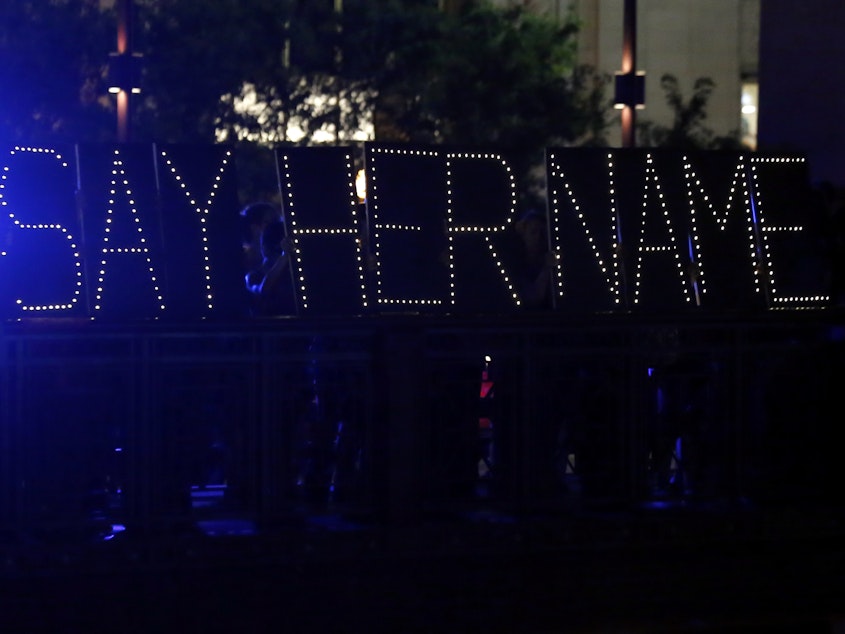'Say Her Name': How The Fight For Racial Justice Can Be More Inclusive Of Black Women

Philando Castile, Eric Garner and George Floyd. The deaths of these Black men at the hands of police have fueled outrage over police brutality and systemic racism.
Men make up the vast majority of people shot and killed by police.
But the names of Black women who were also killed are generally missing from Americans' collective memories, says Kimberlé Crenshaw, co-founder and executive director of the African American Policy Forum. The Say Her Name campaign, created by Crenshaw's group in 2014, is meant to include women in the national conversation about race and policing. A few women's names and stories, such as Breonna Taylor, who was shot and killed by Louisville police executing a no-knock search warrant in March, have been part of the Black Lives Matter movement. But others have not — women like Michelle Cusseaux and Kayla Moore.
In 2014, Michelle Cusseaux was shot by police in her Phoenix home while they were attempting to take her to a mental health facility. In 2013, police were called because Kayla Moore was having a mental health crisis in her Berkeley, Calif., home, but she stopped breathing after being restrained.
"Black women have been killed in many of the same circumstances as their brothers, fathers and sons. They've been killed driving while Black, being in their homes while Black, having mental crises while Black and their losses just haven't registered in the same way," Crenshaw tells NPR. "So Say Her Name is trying to raise awareness by insisting that we say their names because if we can say their names we can know more about their stories."
Sponsored
Here are excerpts from the All Things Considered conversation.
How has the Say Her Name movement been moving forward in a moment when another movement — Black Lives Matter — has been so very front and center?
Say Her Name sees itself as part of the Black Lives Matter movement. What we're very much hoping Say Her Name does is to broaden the conceptualization of what vulnerability to anti-Black police violence looks like: the typical stories, the things that people think happen, are conflicts largely between men. So it's a typical kind of Black men walking down the street, he looks suspicious even though he isn't and the police encounter him. That's what we're learning to see. That's what George Floyd's case generates for people.
What we want to do is say: That's a risk factor, but also when a Black woman is driving a car and a police officer doesn't like her response and so he threatens to Taser her and that escalates into that person being dead. These are also moments of anti-Black police violence, but they happen in different spaces than we imagine, they happen to different bodies than we can see, and so we want to insert awareness of these other moments so that the movement and the reforms can actually be more inclusive and we hope more productive.
In this moment where there's been so much focus on racial justice do you feel hopeful?
Sponsored
I always feel hopeful. As long as there's breath in my body and in the bodies of others around us to raise awareness and to express our refusal to accept either the terms of life in the society that we live in or the terms of the movements against those discriminations. So I am both hopeful because there's a refusal at this point to accept the status quo. I am vigilant in this point because I know not always does that refusal include all of us who are subject to many of the crises that we are articulating demands against.
NPR's Jonaki Mehta and Dave Blanchard produced and edited this story for broadcast. [Copyright 2020 NPR]


